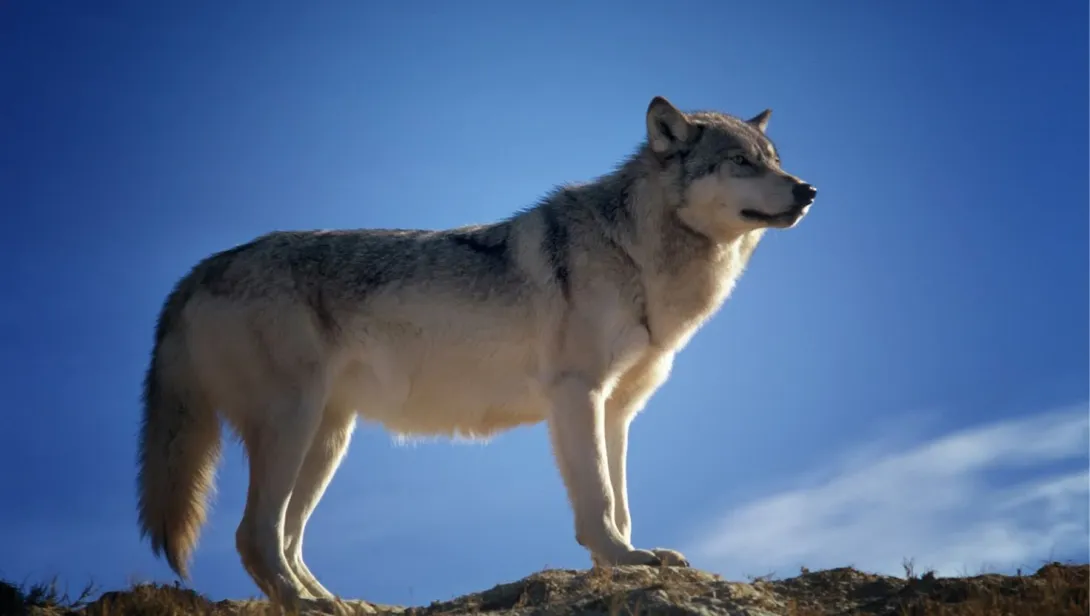Skip to main content
Introduction
- Wolves are large, social carnivores scientifically known as Canis lupus.
- They are the largest members of the Canidae family, which includes dogs, foxes, and coyotes.
- Wolves are known for their strong pack behavior, intelligence, and adaptability.
Physical Characteristics
- Wolves have a muscular and streamlined body, with males weighing between 70 to 145 pounds (32 to 66 kg) and females slightly smaller.
- Their coat color varies from gray, black, white, to brown, depending on their habitat.
- Wolves have strong jaws with a bite force of about 400 psi, capable of crushing bones.
- They have thick fur and a bushy tail, which helps them survive in cold climates.
Habitat and Distribution
- Wolves are found in North America, Europe, Asia, and the Arctic.
- They inhabit a variety of environments, including forests, tundras, mountains, and grasslands.
- Wolves are territorial animals, with packs defending large territories.
Diet and Hunting
- Wolves are carnivorous and primarily hunt large ungulates like deer, elk, moose, and bison.
- They are cooperative hunters, relying on teamwork and strategy to take down prey.
- Wolves can consume up to 20 pounds (9 kg) of meat in a single meal.
- They are opportunistic feeders and will eat smaller animals, carrion, and even berries when necessary.
Behavior and Communication
- Wolves live in packs, which are highly organized social structures led by an alpha pair.
- They communicate through vocalizations such as howls, growls, and barks, as well as through body language.
- Wolves are territorial and mark their territory with scent markings and howling.
- They are nocturnal, being most active during the night and early morning.
Reproduction and Lifespan
- Female wolves give birth to 4 to 6 pups after a gestation period of about 63 days.
- Wolf pups are born blind and rely on their mother and the pack for protection and nourishment.
- Pups stay with the pack for 1 to 2 years before becoming independent.
- Wolves have a lifespan of 6 to 8 years in the wild and up to 15 years in captivity.
Conservation Status
- Wolves are classified as Least Concern on the IUCN Red List, but some subspecies are endangered.
- They are threatened by habitat loss, human-wildlife conflict, and hunting.
- Conservation efforts include protected areas, reintroduction programs, and legal protection.
Unique Adaptations
- Wolves have thick fur and a double-layered coat to survive in cold climates.
- Their strong legs and large paws allow them to travel long distances and navigate snowy terrain.
- Wolves have excellent hearing and sense of smell, which aid in hunting and communication.
- They are highly adaptable and can thrive in a variety of environments.
Cultural Significance
- Wolves are revered in many cultures as symbols of strength, loyalty, and freedom.
- They are featured in mythology, literature, and art across the world.
- In some Native American cultures, wolves are considered spiritual guides.
Fun Facts
- Wolves can run at speeds of up to 35 mph (56 km/h).
- They are highly social animals, with strong bonds within the pack.
- Wolves can travel up to 30 miles (48 km) in a single day in search of food.
- They are keystone species, playing a crucial role in maintaining ecosystem balance.
- Wolves are ancestors of domestic dogs, with whom they share many behavioral traits.
- They are highly intelligent and capable of solving complex problems.
Threats to Wolves
- Habitat loss due to deforestation and urbanization is a major threat to wolves.
- Human-wildlife conflict often results in wolves being killed by farmers protecting livestock.
- Hunting and trapping for their fur and as a means of predator control are significant causes of their decline.
- Climate change is altering their habitats, making it harder for them to find prey.
Conservation Efforts
- Protected areas and wildlife reserves have been established to safeguard wolf habitats.
- Reintroduction programs, such as the reintroduction of wolves to Yellowstone National Park, have been successful.
- Legal protection and stricter wildlife protection laws have helped reduce illegal hunting.
- Community-based conservation programs work to reduce human-wildlife conflict.
